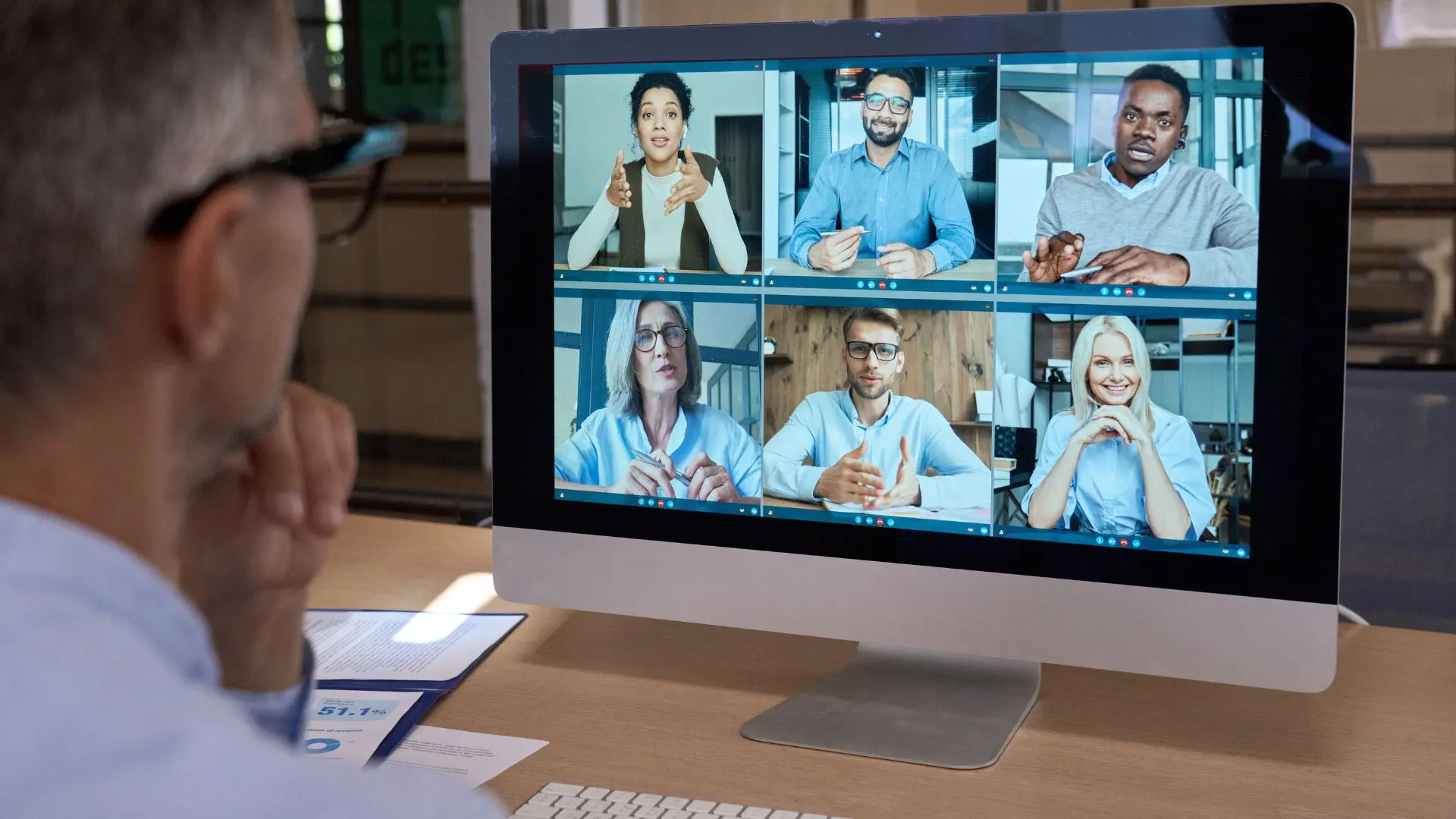Your remote team is a constellation of unique stars, each shining with brilliance and potential. However, unlike a traditional team where members are within arm’s reach, your team members transcend physical boundaries, harmonizing from different time zones and cultures.
Engaging remote employees is not just a managerial responsibility; it is an art of nurturing connections, understanding differences, and celebrating individuality to create a symphony of success.
Also, in today’s dynamic work landscape, remote employee engagement is not just a buzzword; it is imperative for driving productivity, job satisfaction, and retention.
According to a Gallup report, highly engaged teams show 21% greater profitability and experience 41% lower absenteeism.
However, engaging remote employees presents unique challenges that demand innovative strategies and intentional efforts. From effective communication and building trust to fostering a vibrant team culture.
In this blog post, we will explore comprehensive strategies to create a thriving remote team.

Communication, Connection, and Cohesion
When it comes to remote work, communication serves as the lifeblood that courses through every virtual vein. The absence of physical proximity intensifies the significance of effective communication to bridge gaps and minimize misinterpretations. A study by Buffer reveals that 52% of remote employees feel less connected to their company when working remotely.
To ensure a steady flow of communication, foster an environment where team members feel encouraged to express their ideas, concerns, and triumphs openly. Regular virtual meetings and video conferences create opportunities for real-time interaction, facilitating a sense of connectedness among team members. Moreover, using video during virtual meetings allows participants to gauge facial expressions and non-verbal cues, enhancing understanding and building rapport.
While in-person engagement may rely on a combination of verbal and non-verbal cues, remote communication demands conscious efforts to emphasize transparency and clarity. Setting clear expectations for remote communication and establishing guidelines for response times can mitigate misunderstandings and streamline collaboration.
Building Trust: The True North of Remote Employee Engagement
Trust is the cornerstone of any successful team, and remote teams are no exception. Without the luxury of daily face-to-face interactions, remote employees rely on trust more than ever. According to research conducted by Google’s People Operations at Google, trust is the foundation of a successful team, and psychological safety is key to building trust.
Promote transparency by sharing relevant information openly and including remote employees in decision-making processes. Embrace vulnerability by acknowledging challenges and seeking input from team members on potential solutions. Transparency and vulnerability lay the groundwork for trust and foster an environment where employees feel safe to take risks and contribute without fear of judgment.
One effective way to build trust among remote teams is through virtual team-building activities. These activities offer a platform for team members to interact informally, get to know each other’s personalities and develop a deeper understanding of their colleagues. By understanding and recognizing our similarities and differences when it comes to how we think, work, and communicate, remote teams can form stronger bonds and collaborate more effectively.
Introduce your remote team to tools like Personalysis, a science-based personality assessment that unlocks the mysteries of individual personalities and team dynamics. Personalysis offers a clear roadmap to help appreciate, respect and work with the dynamic strengths that exist between teams and employees. This triggers more meaningful discussions, fosters stronger working bonds, and facilitates seamless collaboration, ultimately resulting in elevated levels of employee engagement and team unity.
Setting Clear Goals and Expectations: Navigating Together
Remote work requires a compass to steer your team towards collective goals. Setting clear and measurable objectives using the SMART framework ensures everyone is aligned and accountable. A study by McKinsey found that teams with clear goals and roles were four times more likely to be high-performing.
Communicate performance expectations to remote employees and provide regular feedback to keep them on track. Remote employees may feel disconnected from the organization’s mission, but by linking their individual goals to the larger objectives of the company, you can foster a sense of purpose and motivation.
Incorporate performance evaluations into your remote team’s workflow. Providing constructive feedback and recognizing achievements reinforces engagement and enhances job satisfaction. A Gallup survey found that employees who feel that their opinions are heard and recognized are 4.6 times more likely to perform their best work.
Beyond goal-setting and feedback, embrace a culture of continuous learning and development. Offering remote learning and development opportunities, such as virtual training programs, online courses, and mentoring, empowers your remote employees to grow, thrive, and contribute significantly to your team’s success.
Recognizing Contributions: Fueling the Fire of Engagement
Every star in your remote team constellation shines brightly with unique contributions. Recognizing and appreciating these efforts fuels the fire of engagement. According to a study by O.C. Tanner, 79% of employees who quit their jobs cited a lack of appreciation as a key reason for leaving.
Implementing effective recognition and reward programs tailored for remote teams can create a culture of appreciation. Virtual shout-outs during team meetings, digital badges for achievements, and e-gift cards as tokens of appreciation are simple yet impactful ways to recognize remote employees’ efforts.
However, the key to meaningful recognition lies in personalization. Taking the time to understand individual preferences and recognizing achievements in a manner that resonates with each employee fosters a sense of belonging and reinforces their commitment to the team’s success.
Nurturing Work-Life Balance: The Essence of Well-being
Creating a work-life balance culture is paramount for remote employee engagement. Remote work can blur the lines between personal and professional life, leading to burnout and decreased job satisfaction. According to a study by Owl Labs, 22% of remote employees struggle with work-life balance, contributing to a sense of overwhelm and disengagement.
Encourage your team members to set boundaries and maintain a clear separation between work hours and personal time. Avoid scheduling virtual meetings during non-working hours and respect individual schedules to create a conducive work environment.
Incorporate breaks into the daily routine to allow remote employees time to recharge and re-energize. Research conducted by the Draugiem Group found that the most productive employees took regular breaks throughout the day.
Offer flexible scheduling options to accommodate the diverse needs of your remote team. Recognize that some employees may prefer working during non-traditional hours to accommodate personal commitments or optimize their productivity.
Cultivating Individual and Team Learning and Development
The path to remote employee engagement is intertwined with the hunt for professional growth. Embracing a culture of continuous learning and development not only empowers individual team members but also strengthens the collective prowess of the remote team. A Gallup study revealed that employees who believe their company encourages personal development are 3.6 times more likely to be engaged.
Connecting Professional Growth to Remote Employee Engagement
Engaging remote employees in their personal development journey is a win-win scenario. When employees perceive that their organization invests in their growth, they are more likely to feel valued and committed. Furthermore, professional development provides remote team members with the skills and knowledge needed to excel in their roles, boosting confidence and performance.
To foster a growth-oriented mindset, leaders can engage in frequent discussions about individual career aspirations and map out developmental paths. This collaborative approach empowers employees to take ownership of their growth and aligns their professional goals with the team’s objectives.
Strategies for Offering Remote Learning and Development Opportunities
In the dynamic landscape of remote work, organizations have an array of virtual resources to enrich the learning experience of their remote employees. Leveraging these strategies not only supports individual growth but also fortifies the team’s collective capacity for success.
- Virtual Training Programs: Access to virtual training sessions allows remote team members to stay current with industry trends, best practices, and evolving technologies. These programs can be tailored to address specific skill gaps or address emerging challenges.
- Online Courses: The digital world offers a wealth of online courses covering diverse subjects. By providing remote employees with access to relevant courses, organizations empower them to expand their knowledge and expertise.
- Mentoring and Coaching: Establishing virtual mentoring and coaching programs fosters personalized guidance and support for remote team members. Through one-on-one interactions, mentees can receive insights and advice from experienced colleagues, while mentors can develop leadership and communication skills.
- Webinars and Workshops: Hosting virtual webinars and workshops allows remote employees to participate in interactive learning experiences. These events offer opportunities for networking and collaboration with peers, enhancing engagement and knowledge-sharing.
- Self-directed Learning Resources: Equipping remote team members with curated resources, such as e-books, articles, and videos, enables self-directed learning and professional growth at their pace.
Embracing Diversity to Strengthen Team Collaboration
The journey of remote employee engagement is not just about individual development but also about learning how to work harmoniously as a team. Understanding and appreciating the differences that exist within the team’s composition is instrumental in nurturing team cohesion and collaboration.
Fostering a Remote Team Culture: The Weave of Togetherness
Team-building for virtual teams is not just a luxury; it is a necessity. Remote employees may feel isolated, making it essential to foster a sense of camaraderie and connection. A Gallup study found that employees who have close work friendships are more engaged and less likely to leave their jobs.
Organize virtual team-building events that encourage collaboration and create shared experiences. Virtual team-building activities like virtual escape rooms, online games, or even virtual coffee breaks can enhance team cohesion and boost morale.
Embrace regular check-ins with your remote team to celebrate achievements and acknowledge challenges. These check-ins provide opportunities for team members to connect and feel valued as contributors to the team’s success.
Understanding and recognizing team members’ personalities and the team’s collective personality through tools like Personalysis can further enhance collaboration. Personalysis offers insights into how team members can work together effectively by leveraging their unique strengths and perspectives.
Leveraging Technology for Remote Collaboration: The Nexus of Connection
In the digital age, technology serves as the nexus of connection for remote teams. Investing in the right collaboration tools and platforms can significantly enhance remote team communication and productivity.
Leverage video conferencing tools to facilitate face-to-face interactions among team members, even when physically apart. The Harvard Business Review found that video conferencing increases engagement and reduces feelings of isolation among remote employees.
Provide training and support to ensure that employees feel comfortable with the technology at their disposal. A lack of technical proficiency can lead to frustration and disengagement. By offering training and tech support, you empower your remote employees to navigate the digital landscape confidently.
Also, consider adopting project management tools and platforms that streamline workflows and enable seamless collaboration. Tools like Asana, Trello, or Slack can improve task organization, communication, and project tracking.
Measuring Remote Employee Engagement: Illuminating the Way Forward
In the pursuit of excellence, measurement is vital. The ability to gauge remote employee engagement levels empowers leaders to make informed decisions and tailor strategies for continued success.
Conduct regular surveys to collect feedback and assess engagement levels among remote team members. These surveys provide valuable insights into the team’s sentiments, needs, and areas of improvement.
Organize virtual focus groups to facilitate open discussions and encourage team members to communicate and share their perspectives on remote work and team dynamics. The information gathered from these sessions can highlight pain points and identify growth opportunities.
Lastly, incorporate employee engagement metrics into performance evaluations to ensure that remote employee engagement remains a priority for managers and leaders.
Engaging Remote Employees with Personalysis: Empowerment through Understanding
As we reach the end of this transformational journey, let us remember that every individual on your team is a star in their own right. Nurturing their growth, fostering trust, recognizing their contributions, and embracing work-life balance culminate in a symphony of success that transcends physical boundaries.
Personalysis is not just a tool; it is a key to unlocking the true potential of your remote team. By understanding and appreciating the dynamic differences that exist between individuals and teams, Personalysis empowers leaders to create personalized engagement strategies. Personalysis is here to unleash the potential of your remote team through the power of understanding and appreciation.
Let us embark on this collective journey of building a thriving remote team together. By applying the strategies and insights shared, you can elevate your remote team’s engagement to new heights, creating a virtual domain of success that shines brightly in today’s dynamic work landscape.




